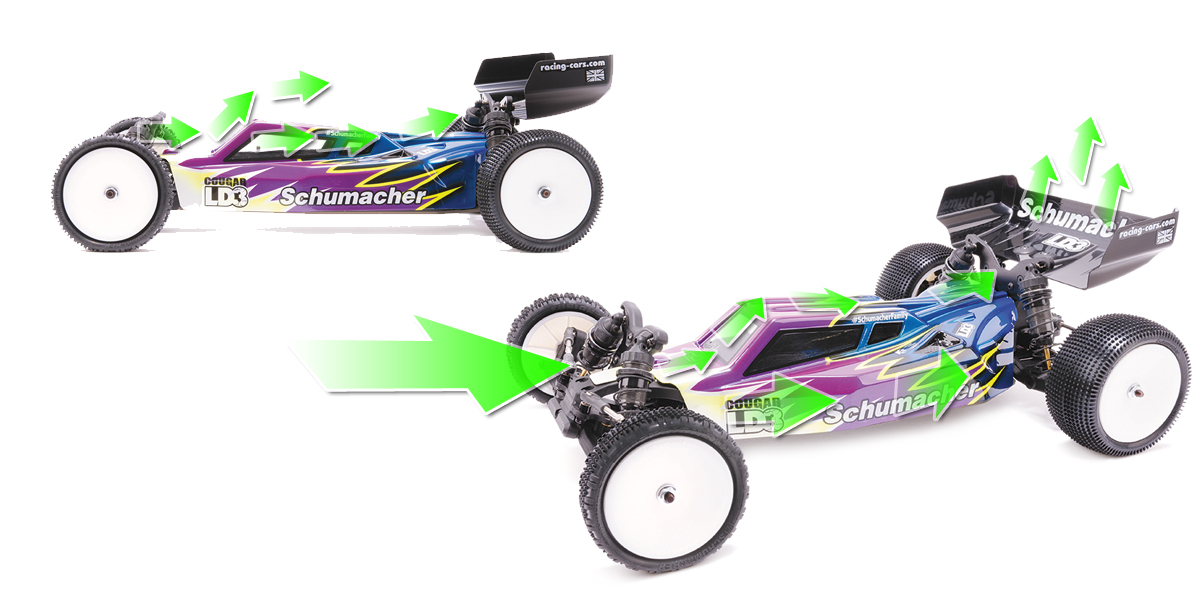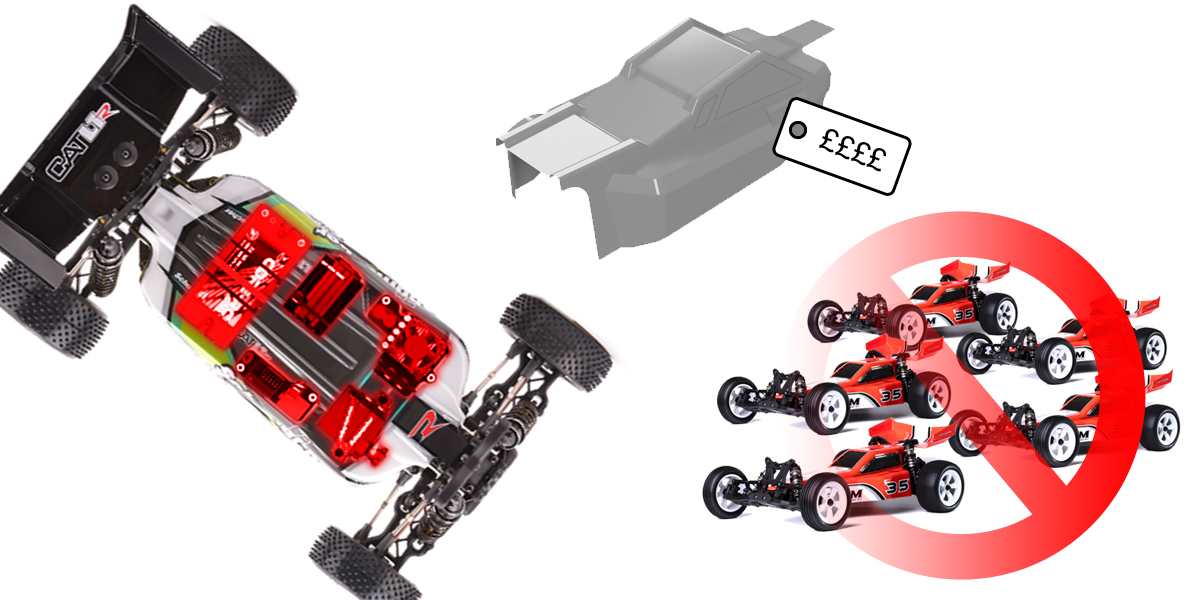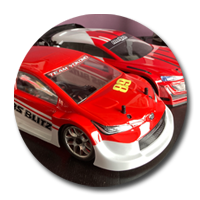 Should RC buggies have interchangeable bodyshells across all brands?
Should RC buggies have interchangeable bodyshells across all brands?
The idea behind this question is simple: what if all RC buggies had to follow a set of standard dimension limits and mounting points? This would mean that any bodyshell could fit on any chassis, as long as it met the required width, length, and height. The mounting points would also be standardised, ensuring that the bodyshells could be easily swapped between different brands.
This is already the case with on-road RC cars, where manufacturers build their chassis with set wheelbases and widths. This allows any on-road bodyshell to fit over them without issue. However, buggies work differently. Manufacturers design their bodyshells to fit tightly around the unique shapes of their chassis, placing mounting points wherever is most convenient for their design.
Is There a Problem with Buggy Bodyshells?

Most people would say no, but there is a concern that it could become an issue in the future. In the past, buggies received chassis updates every few years. Now, many models are updated yearly, though bodyshells tend to change every few years.
Bodyshells can sometimes be backwards compatible, but confirming this is not always easy. As the vintage RC racing scene continues to grow with events like the Iconic Revival becoming hugely popular, we could face a problem in the future. When today’s modern buggies become vintage in a few decades, will there be too many variations to find the correct body for a specific chassis?
Take the XRAY XB2 as an example. Released in 2016, the chassis has been updated every year since. The stock bodyshell that comes with it has changed four times in seven years. This shows how quickly designs evolve, making it harder to track down compatible shells for older models.
Pros and Cons of Interchangeable Bodyshells
Initially, I expected this debate to be one-sided, but after listing the pros and cons, I found it harder to argue against interchangeable shells. The benefits seem to favour racers, while most drawbacks impact manufacturers.
Pros
-
Easier to Transfer – Buggy shells last longer than touring car bodies, so they could be reused on newer models.
-
More Setup Options – Racers could test different designs for different track conditions.
-
Performance Leveller – It could eliminate any aerodynamic advantages between manufacturers.
-
Better for Vintage Racing – Would make it easier to find bodyshells for old cars.
-
Lower Prices – More manufacturers could produce compatible shells, potentially reducing costs.
-
Easier for Beginners – Standardised bodies might simplify setup for new racers.
Cons
-
Restricted Development – Could limit chassis innovation as manufacturers focus on fitting restrictions.
-
Boring Aesthetics – All buggies could start to look the same, especially if a dominant design emerges.
-
Fitment Issues – A standard design might create gaps between chassis and body, affecting aerodynamics.
-
Extra Cost for Racers – Manufacturers might stop including bodies with kits, adding another expense.
-
Difficult to Regulate – Getting manufacturers to agree on a standard could be nearly impossible.
What Our Followers Think About Interchangeable Buggy Bodyshells

We asked our community on Facebook, Instagram, and Reddit. Here’s what they said:
Most racers are against interchangeable bodyshells, arguing that it would limit design, engineering and tuning options. Each brand has unique chassis dimensions and layouts, which affect performance. Standardisation could make all buggies too similar and reduce innovation.
lorrylemming: "Bodyshells do have a performance effect, but it's minimal. You can adjust performance through wing changes instead."
SJ Perkins: "We don’t want IndyCar-style RC racing. Touring cars are already all the same."
Ok-Day7012: "Standardising shells would limit customisation of electronics, motor placement, shocks, and wheels. Racing is as much about engineering as it is about driving."
Bullfrog_Paradox: "No. It would restrict design and engineering options."
Some racers supported the idea, saying it would make replacements easier and allow more aftermarket designs. Others feel modern buggies look dull and want more variety.
RacerX200: "In on-road racing, high-end cars can use most bodies with adjustable mounts. But in off-road, bodies don’t matter as much, so standardised mounting isn’t necessary."
sandyballs.rc: "Modern buggies lack the character of vintage ones. A standard fitment would be great, but I’d prefer to see more aftermarket options."
Conclusion
My personal opinion; If it isn’t broken, don’t fix it. Buggy bodyshells last much longer than other RC classes because they’re protected by the wheels and tyres. The main damage occurs to the wing, which is already interchangeable. I love watching high-level buggy racing and I’ve never felt that one manufacturer dominates purely because of bodyshell development. Giving everyone the same shell wouldn’t make much difference.
At first, the idea of standardisation seemed reasonable, but when you consider the logistics and the time required to implement such changes, it becomes clear that it’s unnecessary. I sympathise with future collectors who might struggle to find vintage bodies, but many collectors enjoy the challenge of tracking down rare parts.
I was surprised that the feedback from our followers was more diplomatic than expected. I anticipated jokes and angry messages from hardcore buggy racers, but the debate was balanced and thought-provoking. This is a topic worth revisiting in the future – perhaps just for fun in the pits. But for now, we have bigger things to fix in RC racing!
Next weeks Hot Topic will be:
What key factors Contribute to Winning an RC Endurance Race?
With our Hyper Hatch 3Hhr event just around the corner next Monday, we want to know - What’s the Secret to RC Endurance Racing Success?
Is it all about having a well-drilled team? Does the right equipment make all the difference over long stints? Or is preparation and testing the ultimate key to success?
We’d love to hear your top tips, experiences, and even lessons learned the hard way! Drop your thoughts in the comments on our Facebook page: https://www.facebook.com/rcclubhub.
 Cool Wall Submissions
Cool Wall Submissions
Satyrus West - Pocket Rocket
Verdict: We're still not sure if we are a fan of yellow wheels on a TC but the body looks out of this world. We also have a soft spot for wood floor RC racing, a true racers surface! Welcome to the cool wall.
Chris Sale - Optus Prime
Verdict: First rule of Cool Wall.... Must be painted by the owner. We know Chris didn't paint this one, because we did. We were also the ones that submitted it. It was created as a promotional image for the Penguin Optus. It may not be eligible for the Cool Wall but Chris is happy with it looks, it also came away with a victory at it's first meeting. Clearly a winning shape.
Check out our Cool Wall here: https://www.rcclubhub.co.uk/index.php/rc-pit-post/the-cool-wall
Submit your body designs via our Facebook page: https://www.facebook.com/rcclubhub
|




 ClubHub Steve
ClubHub Steve